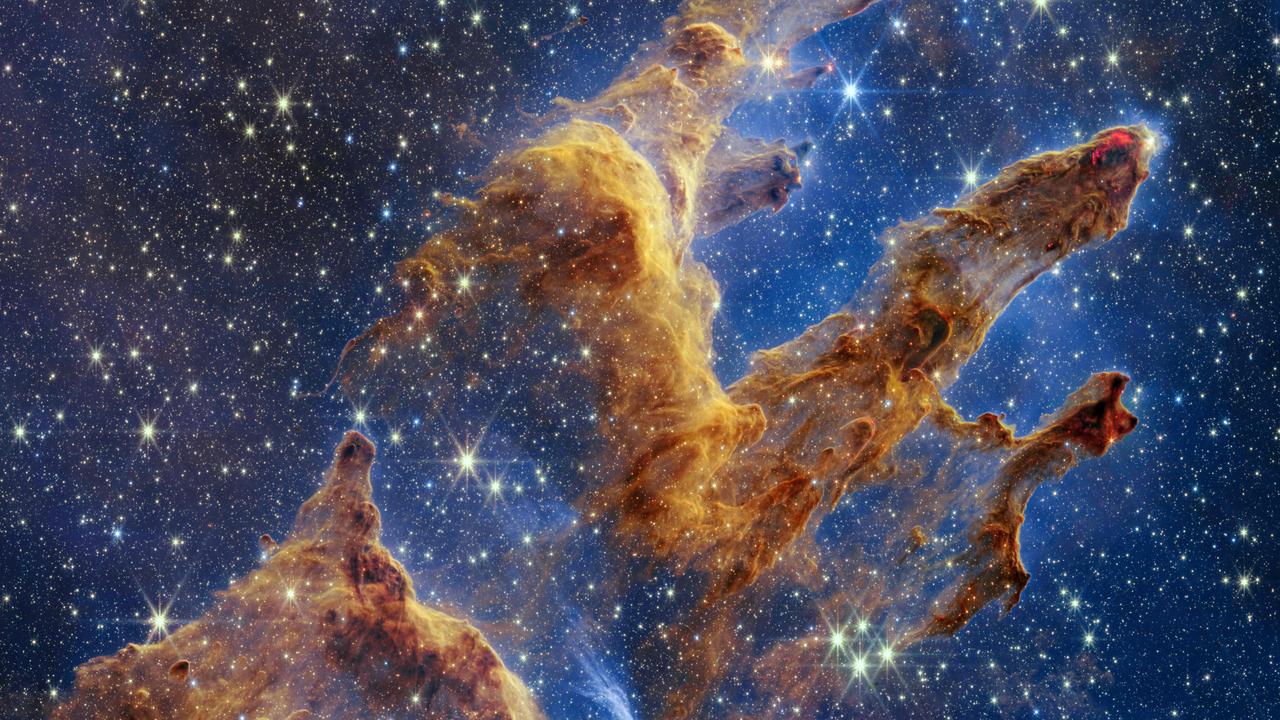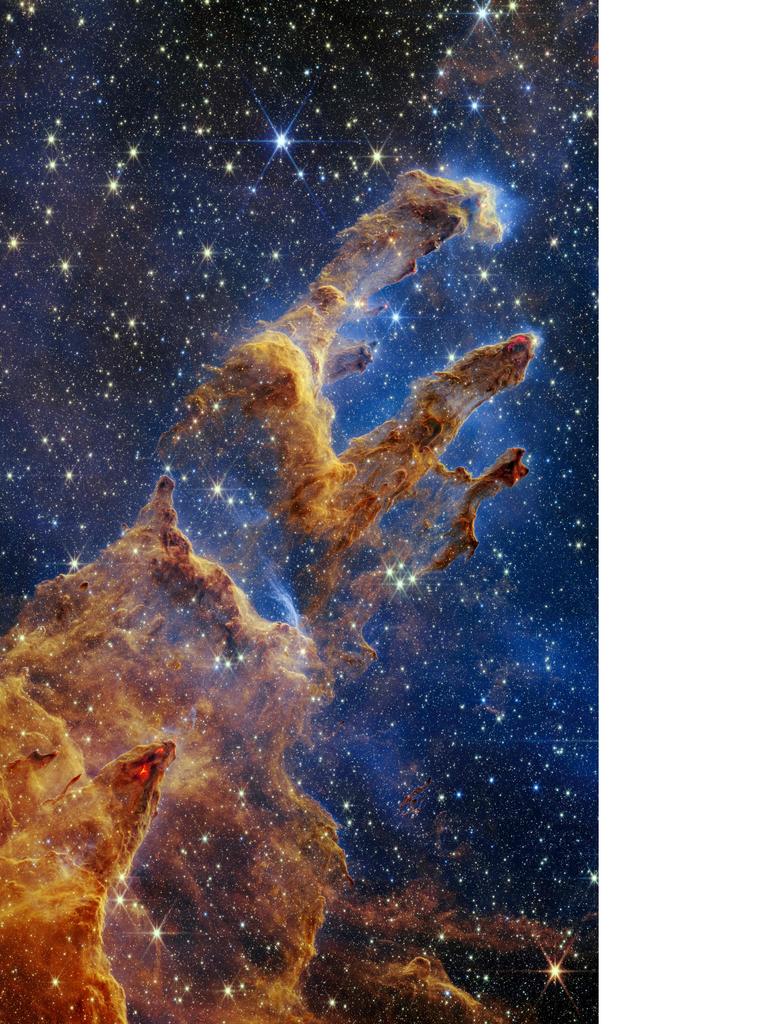James Webb telescope takes new Pillars of Creation cosmic snapshot
The $10 billion James Webb Space Telescope has sent another spectacular cosmic image back to Earth, this time of the Pillars of Creation

READING LEVEL: GREEN
NASA’s James Webb Space Telescope has produced another spectacular image from outer space, this time capturing the iconic* Pillars of Creation.
The fresh view of the Pillars of Creation, where new stars are forming within huge, dense clouds of gas and dust, is as majestic* as anyone could hope.
The pillars were first made famous when NASA’s Hubble telescope captured an image in 1995 and again in 2014, but Webb’s near-infra-red camera has captured the cosmic* landscape in breathtaking new detail.
Thousands of twinkling stars illuminate* the telescope’s first shot of the gigantic gold, copper and brown columns standing in the midst of the cosmos*. And bright red, lava-like spots light up the ends of several pillars.

“These are ejections* from stars that are still forming, only a few hundred thousand years old,” NASA said in a statement.
NASA said these “young stars periodically* shoot out supersonic* jets that collide with clouds of material, like these thick pillars”.
The Pillars of Creation are located 6500 light years from Earth, in the Eagle Nebula of our Milky Way galaxy.

Webb’s near-infra-red capabilities allow the telescope to peer through the dense gas and dust of the pillars, revealing many new stars forming.
“By popular demand, we had to do the Pillars of Creation with Webb,” said Klaus Pontoppidan, the science program manager at the Space Telescope Science Institute. “There are just so many stars!”
NASA astrophysicist* Amber Straughn summed it up on Twitter: “The universe is beautiful,” she wrote.
The image, covering an area of about eight light years, was taken by Webb’s primary camera, NIRCam, which captures near-infra-red wavelengths that are invisible to the human eye. The colours of the image have been “translated” into visible light.

NASA said the new image “will help researchers revamp* their models of star formation by identifying far more precise* counts of newly formed stars, along with the quantities of gas and dust in the region”.
Operational since July this year, Webb is the most powerful space telescope ever built, and has already produced a raft* of unprecedented* data.
Scientists are hopeful it will herald* a new era of discovery.
One of the main goals for the $US10 billion telescope is to study the life cycle of stars. Another main research focus is on exoplanets, which are planets outside Earth’s solar system.
GLOSSARY
- iconic: very famous or popular, especially because it is symbol of something
- majestic: having or showing impressive beauty, size or power
- cosmic: to do with the universe
- illuminate: light up
- cosmos: universe
- ejections: the actions of forcing or throwing something out
- periodically: from time to time, occasionally
- supersonic: faster than the speed of sound
- astrophysicist: a scientist who studies space, stars, planets and the universe
- revamp: to change something in order to improve it
- precise: exact, accurate and careful about details
- raft: a lot, large number
- unprecedented: not seen or done before
- herald: a sign something is about to happen
EXTRA READING
Cartwheel Galaxy snaps have space fans in a spin
NASA shows off amazing new cosmic views
NASA’s new ‘time travel’ telescope
World’s most powerful space telescope launched
QUICK QUIZ
- When was the first image of the Pillars of Creation captured?
- Which telescope captured this first image?
- How far are the Pillars of Creation from Earth?
- Which camera on the Webb telescope captured the new image?
- How much money is the James Webb Space Telescope worth?
LISTEN TO THIS STORY
CLASSROOM ACTIVITIES
1. James Webb Telescope profile
Create a one-page profile of the James Webb Space Telescope to tell people who haven't heard of it all about it. You can use information from this news article to help you. You can also use the "search" function on the Kids News website to gather information from previously published stories featuring the telescope.
Time: allow 30 minutes to complete this activity
Curriculum Links: English; Science
Curriculum Links: English; Science
2. Extension
Write a poem inspired by the wonder of the Pillars of Creation. See if you can incorporate today's glossary words into your poem.
Time: allow 15 minutes to complete this activity
Curriculum Links: English
VCOP ACTIVITY
Adjectives
An adjective is a describing word. They are often found describing a noun. To start with look at the words before the nouns.
Search for all the adjectives you can find in the article.
Did you find any repeat adjectives or are they all different?
Now pick three of your favourite adjectives from the text and put them in your own sentences to show other ways to use them.

